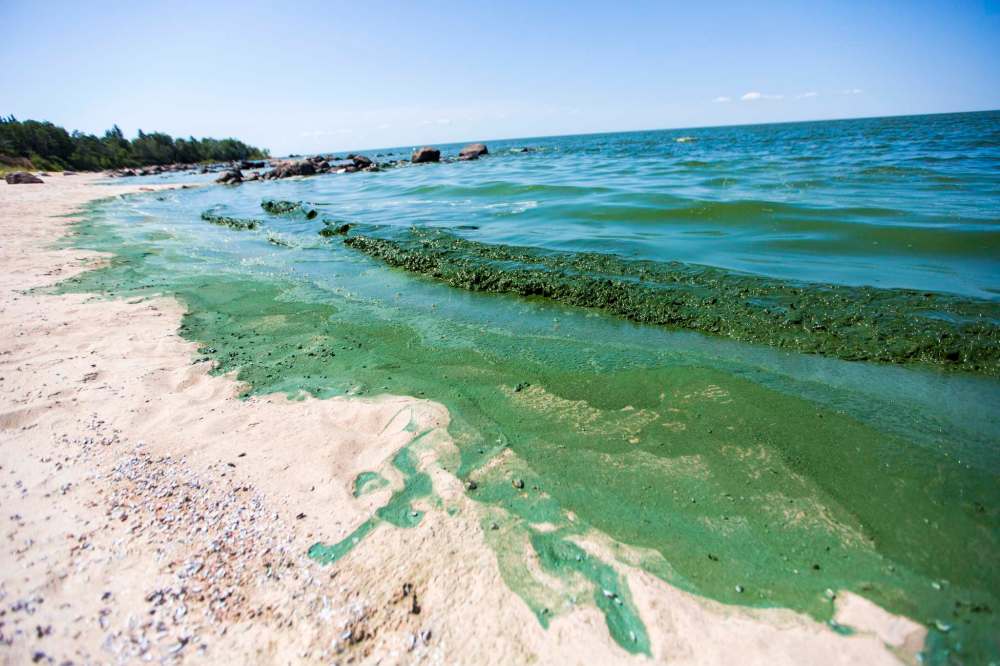Councillors’ compromise won’t stem phosphorus flow to Lake Winnipeg
Advertisement
Read this article for free:
or
Already have an account? Log in here »
To continue reading, please subscribe:
Monthly Digital Subscription
$0 for the first 4 weeks*
- Enjoy unlimited reading on winnipegfreepress.com
- Read the E-Edition, our digital replica newspaper
- Access News Break, our award-winning app
- Play interactive puzzles
*No charge for 4 weeks then price increases to the regular rate of $19.00 plus GST every four weeks. Offer available to new and qualified returning subscribers only. Cancel any time.
Monthly Digital Subscription
$4.75/week*
- Enjoy unlimited reading on winnipegfreepress.com
- Read the E-Edition, our digital replica newspaper
- Access News Break, our award-winning app
- Play interactive puzzles
*Billed as $19 plus GST every four weeks. Cancel any time.
To continue reading, please subscribe:
Add Free Press access to your Brandon Sun subscription for only an additional
$1 for the first 4 weeks*
*Your next subscription payment will increase by $1.00 and you will be charged $16.99 plus GST for four weeks. After four weeks, your payment will increase to $23.99 plus GST every four weeks.
Read unlimited articles for free today:
or
Already have an account? Log in here »
Hey there, time traveller!
This article was published 03/10/2019 (2260 days ago), so information in it may no longer be current.
Councillors on a civic committee hammered out an agreement Thursday morning setting deadlines to test interim solutions to reduce phosphorus emissions from the North End sewage treatment plant.
The effort by councillors on the environment committee to find a compromise succeeded where a similar attempt was rejected in a 9-7 vote at last week’s council meeting.
But even with a compromise, officials from the water and waste department confirmed that no interim measures to significantly reduce phosphorus emissions will be put in place at the plant until late 2022 or 2023.

Committee chair Coun. Cindy Gilroy said the new motion clarifies the perception left with the public since last week’s council vote that the city is not taking any action on phosphorus reduction.
“I think (the Thursday motion) makes it more clear,” Gilroy told reporters following the meeting, adding the water and waste department had always intended to explore phosphorus reduction methods.
“I think what we can agree on is we need to be clear with the public. We are moving forward.”
Coun. Kevin Klein said the compromise motion was only a slight variation on what he and Coun. Shawn Nason had proposed at council, adding he doesn’t understand why Mayor Brian Bowman and other councillors had opposed it rather than find a solution that the committee achieved Thursday.
The Thursday motion still needs to be approved by council, which is likely to occur at its Oct. 24 meeting.
The compromise doesn’t move up the timeline, but it at imposes deadlines on the department and will allow the public and councillors to monitor progress, Klein said.
“At least now we have some deadlines and something to follow up on. Before the motion, we wouldn’t have had that opportunity,” he said.
The presence of phosphorus in the Red River has been identified as the culprit for the appearance of the slimy green algae in Lake Winnipeg.
The North End plant is considered to be the largest, single-point contributor of phosphorus to the lake, accounting for an estimated five per cent of all emissions.
The city faces a Dec. 31 deadline to reduce emissions of phosphorus from its North End sewage treatment plant to one milligram per litre from the current level of 3.54 milligrams per litre.
Earlier this summer, the Lake Winnipeg Foundation and the International Institute for Sustainable Development suggested the city could reduce phosphorus emissions at the plant by 70 per cent — meeting environmental licence requirements — by implementing an interim measure of treating emissions with ferric chloride, a process employed by several municipalities in Eastern Canada and the United States.
But the water and waste department told the province at the end of July that the ferric chloride method wouldn’t work at the North End plant, that it needed two more years to develop an interim plan and in the meantime, would do tests on alternative methods.
Alexis Kanu, executive director of the Lake Winnipeg Foundation, said she’s disappointed with the length of time before emissions will be reduced, adding she believes a consultant’s report prepared for the study said testing could begin at the plant immediately.
“We could start to achieve environmental benefits now in a low-risk way, through a trial program at the plant,” Kanu said. She is interested to know how the provincial government will respond to the city’s proposal.

The water and waste department had always intended to include the ferric chloride treatment as part of its testing, but failed to clearly communicate that to council and the public, Gilroy said.
The motion hammered out Thursday requires the department to hire a consultant within four months, who will then develop procedures for laboratory testing of phosphorus reduction. Further testing that could last six months or longer will be required once the South End sewage treatment plant upgrade is complete at the end of 2021.
Only at that point would testing begin at the North End plant.
But at least one city resident believes the timeline approved by the councillors is still too long.
Dudley Thompson, an architect who appeared at the committee to urge it to find a solution, said he doesn’t understand why it will be another three years before the city implements any move to reduce emissions at its North End plant.
“We’re looking at three years, minimum, before anything actually changes in the system. I don’t know. Maybe that’s the best we can do,” Thompson said. “To wait for three more years seems crazy.”
Thompson, who has a cottage on Lake Winnipeg, told reporters he doesn’t understand why city hall hasn’t embraced the institute’s proposal, even if it would not meet the provincial licence target.
“Why do nothing for 15 for 20 years?” he asked.
Thompson said he doesn’t understand why city officials appear so reluctant to take any steps to reduce emissions from the plant, adding the water and waste department might have an updated report for the committee in two years but even then there is no commitment that any further measures will be taken to reduce phosphorus.
aldo.santin@freepress.mb.ca


